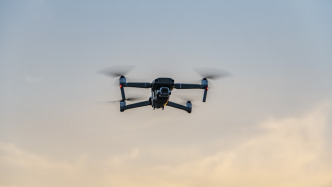The reporter learned from the Chinese Academy of Sciences on the 28th that the "Exploration No. 2" scientific research ship carried the "Deep Sea Warrior" manned submersible to complete a series of sea trials and has returned to Sanya a few days ago. During the sea trial, researchers successfully set up a large-depth in-situ scientific experimental station on the seabed, which will realize long-term unmanned scientific research in the deep sea.

"Exploration No. 2" scientific research ship. Photo courtesy of the Institute of Deep Sea, Chinese Academy of Sciences
The in-situ scientific experiment station is a new type of deep-sea equipment technology system proposed by my country in recent years. It takes the deep-sea/abyss base station as the core, can carry a variety of unmanned submersibles, and can be connected to platforms such as chemical/biological laboratories. A series of scientific explorations and scientific experiments are carried out in situ in the deep sea/abyss.
"Setting up an in-situ scientific experiment station on the seabed is equivalent to moving the testing and analytical instruments of the land laboratory to the seabed as a whole." Chen Jun, an associate researcher at the Institute of Deep Sea Science and Engineering, Chinese Academy of Sciences, introduced that he took samples from the seabed and brought them to the land laboratory. Compared with the traditional marine survey methods of detection, in-situ scientific experiments in the deep sea can avoid the damage or loss of sample data caused by environmental changes.

In situ laboratory work screen. Photo courtesy of the Institute of Deep Sea, Chinese Academy of Sciences
According to reports, the in-situ scientific experimental station system deployed this time will work fully autonomously on the seabed, capable of self-condition monitoring and intelligent management. All data will be regularly transmitted back to the shore-based control center through the deep-sea glider relay communication. In situ scientific experiment station for remote control.
The in-situ scientific experimental station deployed this time is equipped with a megawatt-hour lithium battery energy system, which has achieved a new breakthrough in energy density. The energy system can store 1,000 kWh of electricity and support the in-situ scientific experimental station to work continuously on the seabed for more than half a year.

Submarine base station operation screen. Photo courtesy of the Institute of Deep Sea, Chinese Academy of Sciences
In this sea trial, the "Deep Sea Warrior" manned submersible was used to connect the submarine base station and the in-situ laboratory underwater. function, and the inductively coupled wireless communication function are verified.
In the future, the in-situ scientific experiment station will also be connected to more intelligent unmanned experiments, detection and information transmission systems to realize long-term unmanned scientific research in the deep sea.




Comments